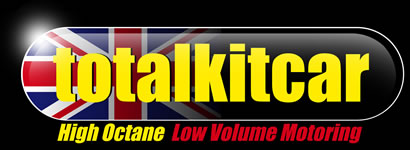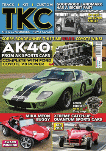WORDS BY STEVE HOLE – PHOTOS – ARCHIVE AND CAROL HARDY
This time we take a look at the gifted designer David Ogle who was tragically killed in a road accident in 1962 aged just 41. His legacy lives on, however.
Born in 1921, David Ogle was an amazing chap who died far too young in a road accident in 1962 aged just 41.
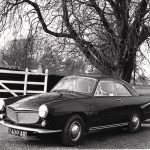
A hugely talented designer both of industrial items and cars he’d founded his eponymous company David Ogle Associates in Stevenage in 1954 and this was rapidly becoming the ‘go-to’ design house in the UK.
David Slingsby Ogle was educated at Rugby School before studying law at Oxford University. In 1940 he joined the Fleet Air Arm and flew Supermarine Seafires (the Royal Navy’s version of the Spitfire) in North Africa, the Mediterranean and the South of France. He rose to the rank of Lt Commander.
He was awarded the Distinguished Service Cross for service and gallantry during the allied invasion of the South of France in March 1945. The DSC was followed by an MBE in June 1946.
He also had ‘RNVR’ after his name indicating that he was a member of the Royal Navy Volunteer Reserve.
Post-war he enrolled at the Central School of Art & Design in London studying Industrial Design, where he would have met Tom Karen. He then joined electronics company Murphy in 1948, before joining rivals Bush, where he designed the TR82 radio.
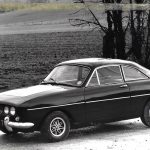
He set up his eponymous design studio – David Ogle Associates – in 1954 and his good friends Sir John Whitmore and John Ogier were not only directors of the company, but they provided funding, too.
Ogier was among other business interests owner of Essex Racing (he lived in the county), which is why Ogle’s own range of cars was always pre-fixed by ‘SX’ which was a tongue-in-cheek tip of the hay to ‘ESSEX’.
Ogle’s design studio created a wide array of products from gas ovens to heaters; from exhibition stands to product packaging. You name it, they could design it.
Talking of his own cars, a separate division called David Ogle Ltd was set up in 1960 to handle sales of their Ogle Riley 1.5, SX250 and SX1000 (aka Ogle Mini). A commission for a bespoke car from the larger-than-life character Boris Forter, MD of Helena Rubenstein cosmetics, based around Daimler Dart mechanicals.
Ogle had form with Forter as he already had a lucrative contract to design perfume box designs for Helena Rubenstein. Although Forter persuaded Ogle to build a dozen ‘specials’ he guaranteed that he could get his friends to buy them with the caveat that if he couldn’t persuade them to buy them, he promised to buy them himself. Unfortunately, he didn’t.
The car was completed after Ogle’s death but only two were sold – one for Forter and the other for his girlfriend. Daimler was approached to take the concept on but wasn’t interested although it did later form the basis of the Reliant Scimitar GT (aka Reliant Sabre).
Sadly, David Ogle’s life ended on May 25, 1962. Having created the Ogle Mini also known as the SX1000 he was heading for Brands Hatch circuit to demonstrate the Lightweight version to a gathering of journalists. He had sold 69 SX1000s by the time of his death.
Tom Karen described what happened: “David got into a dice with another vehicle on the A1 at Digswell Hill, near Welwyn in Hertfordshire. Unfortunately, he lost control at 85mph and hit an oncoming van head-on. The car burst into flames on impact and was a fireball. Poor David never stood on chance”.
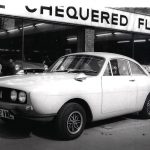
A tragic loss. A gifted man who clearly had so much more to offer.
Tom was always very complimentary about Ogle whom he described as: “a very popular and generous man”. I’ve often seen him described as charismatic and charming.
Meanwhile, within three days of his death, Ogier and Whitmore had headhunted Tom Karen from electronics company Philips to take over at the revised David Ogle Design Ltd in Letchworth as MD and chief designer. Karen had already had s short spell at Ogle in 1959 and his reputation had grown since. Tom steered the company until his retirement in 1995.
OGLE’S CARS
OGLE RILEY 1.5 (1959-1961 – 2 made)
Ogle lengthened the chassis of his Riley 1.5 for this stylish design exercise which he intended a tool to put his company in front of others looking for design input on a car project. He wanted to prove that UK companies didn’t have to go to an Italian carrozzeria.
The Ogle 1.5 did have more than a touch of Alfa Romeo Giulietta about it though and was described as setting new standards for the use glassfibre in cars.
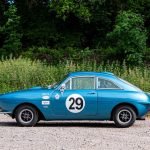
OGLE MINI/SX1000 (1961-1964 – 59 made)
One of the iconic coachbuilt Minis that were so popular and abundant during the sixties.
David Ogle ran into the same issue as every other coachbuilder though. BMC’s refusal to supply new components to outsiders. Ogle got round it by buying new Minis from his local dealership and removing the parts ne needed and dumping the rest. He did, however, use the windscreen and steering column from a Riley 1.5.
Alternatively, customers could supply Ogle with their car and get it back within about six months converted to an Ogle Mini. Build quality was exemplary and the cars are very sought after today.
Of the 59 made several were 1275cc GT versions based on Mini Cooper although lots of Ogles probably had Cooper S engines fitted retrospectively, while others were probably turned into Lightweight GT versions. A lovely old chap worked for Ogle Design building SX1000s reckoned that there were about 20 customer conversions on top of the 62 (including three Lightweight GTs) factory built examples.
BMC did eventually agree to supply David Ogle with component but only on the condition that the word ‘Mini’ wasn’t used, hence the name switch to SX1000 (the ‘SX’ prefix being a tip of the hat to Ogle director, John Ogier’s Essex Racing operation.
Shortly after this a more luxurious ‘Super SX1000’ version (997cc engine was standard fitment) was announced and this had reclining seats, headlight flashers (!), full carpeting, a heater and a rear seat squab. Visually they are easy to spot due to the chrome rather than GRP bumpers complete with over-riders.
Although mechanically almost identical to the ‘donor’ Mini the Ogle SX1000 was heavier but thanks to its slippery aerodynamic shape it could hit a claimed 99mph. It was more expensive though.
If the customer supplied their own Mini for conversion Ogle Design (the name for their car division) prices started at £550 (£8560 today, allowing for inflation) or a fully built SX1000 started at £1069 (approximately £16,637, today). Meanwhile, the higher-spec Super SX100 started at £1176 (equal to around £18,302 in 2023). Put into perspective that this was some £535 more than the cost of a brand new Mini Cooper S in 1962!
Ogle also referred to the car – when in GT-spec – as the OGLE COOPER. Motor Sport magazine journalist Bill Boddy said that he preferred that name because SX1000 sounded like a Russian Solyuz rocket!
Graham Warner of Chiswick-based The Chequered Flag Garage was an official sales outlet for the SX1000 as was John Sprinzel in Kensington. Customers could choose from six colours which were plum red, blue, silver, green, white and primrose yellow.
Famous owners included Stirling Moss.
OGLE SX1000 LIGHTWEIGHT GT (12962 – 3 made)
Thanks to the Mini’s sporting prowess David Ogle always felt that his SX1000 would be an ideal track car and so it proved. He enhanced the idea further by announcing a new Lightweight GT version in March 1962.
This featured a spartan interior with no carpet, Microcell GRP bucket seats, lighter grade GRP bodyshell with integral rollcage and lowered suspension. It was mechanically identical to the standard car although a 1275GT engine was used.
Tragically though David Ogle perished in a Lightweight GT on the A1 in 1962 on his way to Brands Hatch to demonstrate his car to a motoring journalist.
After Ogle Design had finished building SX1000s in 1964 the project passed to Norman Fletcher of Fletcher Marine and became the Fletcher GT.
In 2003, Nostalgia Cars announced that they had permission to rebuild SX1000s as the NC1000 and they displayed one at several kitcar shows over subsequent years. It’s not known how many they produced though.
OGLE SX250 – 1962 – 2 made
Based on Daimler Dart the SX250 stemmed from Helena Rubenstein MD’s order for 12 specials. Ultimately, he only bought two of them though. Ogle Design approached Daimler to see if they had any interest in the project. In the end, Ogle Design under Tom Karen completed two examples.
